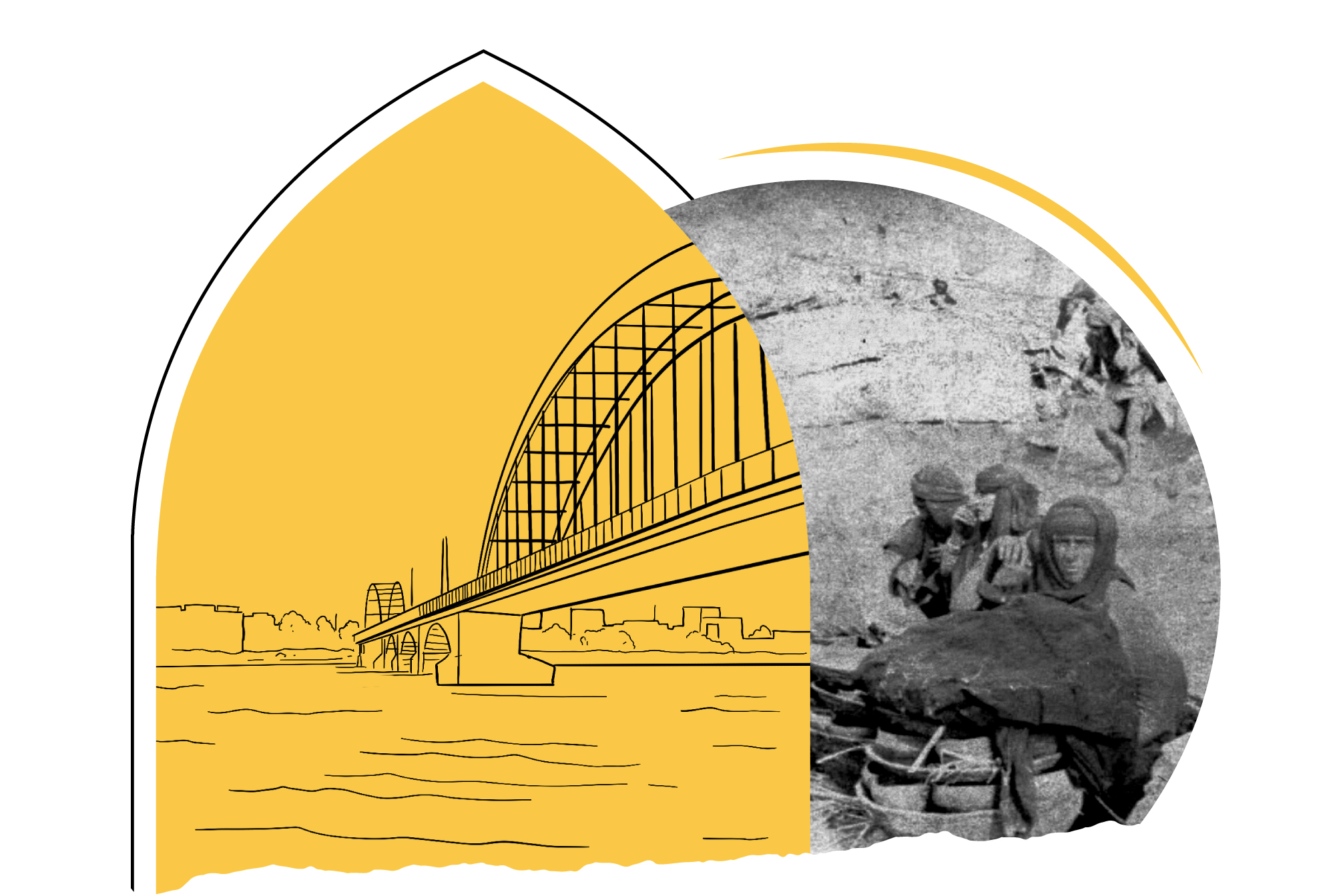
Persianization by Terrorism
"Demographic Erasure" of Ahvaz by Iran Since its Occupation in 1925
Study of the history of colonial policies in the world concludes that “colonialism” took many forms, and the methods of subjugation developed from mere appropriation of land and enslavement of people to attempts to possess their minds and hearts, through a set of measures that aim to separate colonized peoples from their cultural identity and ethnic cohesion, before transforming them to a human extension of the peoples of the colonial countries.
If classical colonialism had striven to exploit tactics of control, the Persians have gone to extremes in the forms of colonialism by resorting to the strategy of “demographic erasure” against Ahvazi Arab component, which is a strategy that is based on two main pillars: displacement and Persianization. As the Persians needed the arms of Ahvazi Arabs, they accepted their bodies and rejected their minds, hearts and tongues. Thus, Persianization was the tactic used in the process of “demographic erasure” or “civilizational cutting”.
A look at the history of Ahvaz reveals that the connection with the Arabic language was religious, sentimental and national, which was embodied in the large number of books that taught children the origins of the Arabic language, jurisprudence and grammar, in addition to the schools that benefited from state support, especially during the era of Sheikh Khazal Al-Kaabi (Khazaliya, Jasabiyyah and Tarbiyyah).
Ahvazi people’s behavioral and cultural connection to Arabic language and culture had aroused the ire of the Persians, who were preparing to occupy Arabistan. This prompted one of the Persian officials to warn about the contents of what was written in the newspapers issued in the state of Arabistan, expressing his rejection to the Arab library and its contents.
From this point of view, it becomes clear to us that Persian plans were not hidden from the Arabs of Ahvaz, which prompted them to fortify behind their language, value and instill it in their souls and hearts before their minds and cores. This is exactly what assures to us that Arab resistance to the waves of Persianization is the culmination of this pan-Arabist approach before the Persian occupation of that Arab region.
If the occupation of Ahvaz contributed to the Persians continuing the series of material exploitation of “demographic erasure” strategy, where “Iran proceeded with its steps to Persianize the region, this caused reactions among its people to carry out unorganized, sporadic and far-flung revolutions”.
The Persians became certain that the center of gravity of Ahvazi people’s resistance is the Arabic language. Thus, they strived to sever the relationship between the Ahvazis and their mother tongue by resorting to installing Persian in the place of Arabic language, cutting the tool of control and link among the Ahvazis, trying to forcibly link them to the Persian nation. The Persians adopted a set of “cutting tactics”, including changing the names of Arab places with Persian ones. Tehran issued a newspaper in the city of Muhammarah, called Khuzestan Newspaper, published in Persian, obligating the people of Ahvaz to buy and read it. They prevented the circulation of Arabic publications and whoever circulated them was subjected to the judiciary for violating a taboo punishable by law.
Iranian hatred and Persian arrogance, as well as the attempt to obliterate the Arab Ahvazi identity, make it clear that the victory of the sect is a mere political piety and a Trojan horse that the Persians used to try to legitimize old ambitions and buried grudges. Otherwise, how do we explain the persecution of Ahvazi Arabs, most of whom are Shiites, who have close ties to Shiite Arab Hawazis, especially in Iraq?
Perhaps publicizing this forgotten issue requires strengthening the Arab component and adopting it politically, diplomatically and in the media, being the strength of the steadfastness front within Arabistan. In this regard, it is possible to take advantage of the mass migration towards virtual space to create the largest number of sites directed to Ahvazi interior, turning them into platforms for framing and guidance on the one hand, and linking Ahvazi components to each other, on the other hand. This would create momentum around the Ahvazi issue that was wronged as no other Arab cause was wronged.
Arab blood is one and the Arab concern is one. If the Palestinian cause is considered the cause of all Arabs and Muslims, then Ahvazi cause must also be the cause of Arabs and Muslims, and the liberation of Ahvazis will lead to the return of the right to its people and to a shift in the balance of power in the region in the interest of the Arabs from the ocean to the Gulf.
"Ahvaz" is an Arab Issue that is not less important than any other national issue.



- Amer Al-Dailami, Iranian Occupation of the Arab Region of Al-Ahvaz, United Nations Resolutions and International Contracts to Decolonization (Amman: Academic House Company, 2021).
- Athbi Al-Otaibi, Iranian occupation of the Emirate of Arabistan and its People’s Right to Self-Determination, Master’s Thesis in Political Science (Amman: Middle East University, 2013).
- Alaa Nawras and Imad Raouf, Linguistic Analysis in Ahvaz: A Documentary Study (Baghdad: Dar Al-Rasheed, 1982).
- Mustafa Al-Najjar, Political History of the Arab Emirate of Arabistan 1897-1925 (Cairo: Dar Al-Maarif, 1980).

